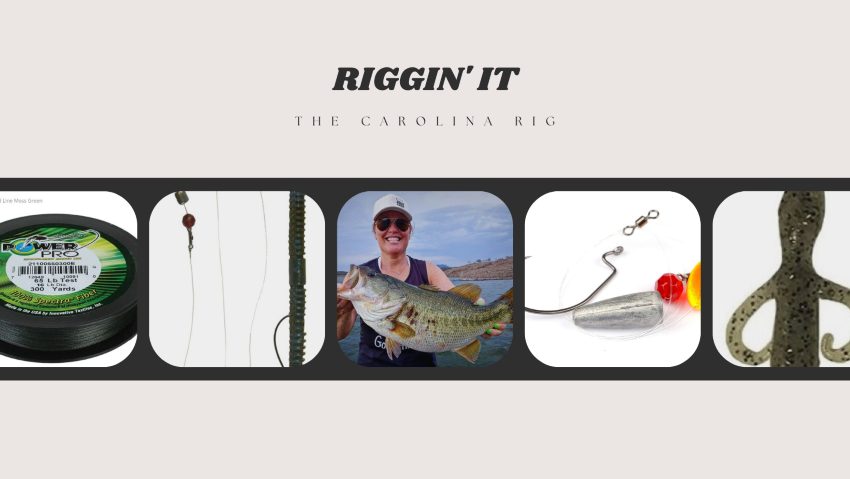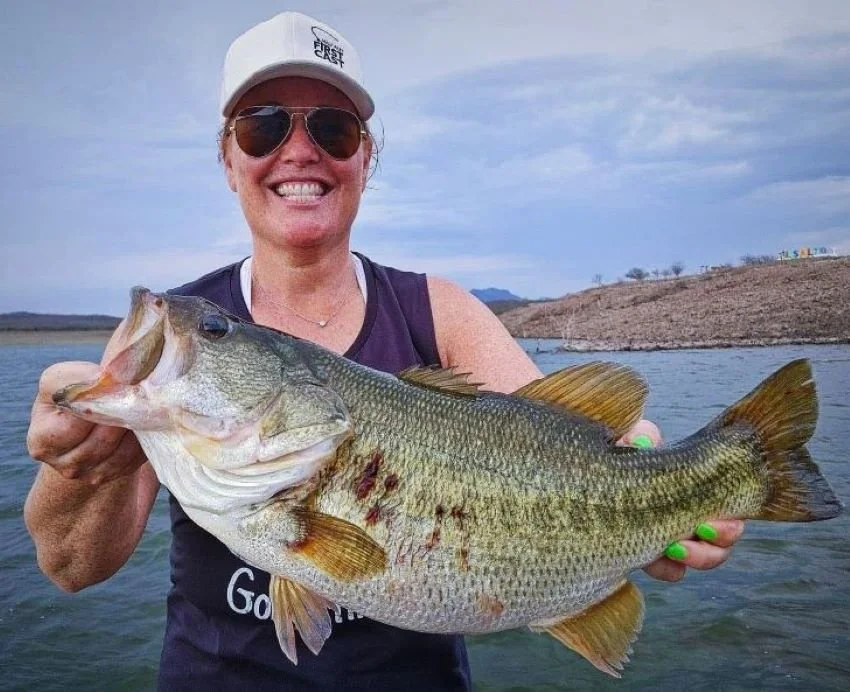Riggin’ It
What’s your favorite rig?
Chevy Silverado?
Ford F150?
Mine’s a Carolina rig.
I didn’t get there easy, because it’s the least favorite way to fish for my teacher, Pete. He actually calls it the “quitter’s rig.” It requires a slow and steady retrieve. Then, when the fish hits the rig, you must wait – patience is not Pete’s strength.
When fishing at Anglers Inn International (Lake El Salto or Picachos) I encourage the guides to teach me techniques I don’t get to fish at home. Since on the Potomac River we rarely fish in more than 3 to 4 feet of water I rarely – ok, never -- throw a Carolina Rig at home.
In Mexico, on the other hand, we spend lots of time plying deep water for big fish. There are all sorts of rock, trees and other cover and structure to feel as you reel back your line.
When do you use a Carolina Rig when fishing for bass?
It’s best to use offshore when you want to cover a lot of water.
Hard bottoms are the best for the Carolina Rig because they allow the components to make more noise to catch the attention of the bass (I am good at making noise).
In soft bottoms, the lure may get covered by the sand, dirt or silt and won’t be seen in order to be eaten. There may be better option in this case.
Drop offs and ledges are textbook spots for you to throw the C-rig. As the bait falls/drops, a little bit at a time, the movement and sound should cause the fish to react and bite.
Cast far -- the C-rig can cover a lot of ground. It can start on rock and be pulled into wood, and then onto gravel and maybe through grass. It helps you determine bottom composition as well as electronics do.
When casting to current and fast moving water make sure you use a heavier weight so that you are assured the weight will make it down to the bottom and stay there.
Now that you know when to use it, let’s talk about what you need, how to rig it and how to cast and present the bait.
Carolina Rig Components
Leader line — I like fluorocarbon. It has minimal visibility, strong abrasion resistance and while it can be tough to manage on a spool here you’re only using a few feet of it.
Main Line — The bass in Mexico tend not to be line shy so I like braid because it’ll handle the biggest fish and provides the most feel. It can occasionally have problems with fraying on rocks, so retie regularly.
Sinkers and beads — Tungsten weights are the most dense and they’re worth the extra cost. The bead will protect your knot.
Swivels — This connects your two lines and minimizes line twist.
Hooks — You’ll need something razor-sharp with enough gap to move through all of that plastic at a great distance and in deep water.
Soft Plastics — My favorites are pretty simple:
Rod — Most anglers prefer a long baitcasting rod. It allows for long casts and lots of line pickup on the hook set. Of course, size is relative, 7-foot, 6-inch medium to medium-heavy would be ideal. If you are short like me 7-foot may be just fine. If you are using a heavy weight then a heavier or stiffer rod is better and with a lighter weight a lighter rod may be necessary for casting and feel. One of my favorites that is also quite affordable is the St. Croix Mojo.
Reel — You’ll want a baitcasting reel with plenty of line capacity for long casts, and a high speed gear ratio. Sometimes the fish will run right at you and you need to regain line quickly. It may seem counterintuitive since this is a slow presentation, but all of the lure manipulation is with the rod – the reel is just a device to gather up slack. One of the all-time Classics is the Shimano Curado series.
Order of Rigging a Carolina Rig
Leader line
Thread the weight/sinker
Add the bead(s) (that’s the best part for me, make it pretty)
Attach Swivel to main line
Tie on your hook
Texas rig your choice of plastic
When in doubt, watch a YouTube video and practice putting it all together
Actually, I never do any of this, one of the great things about Anglers Inn is that your patient guide will gladly do this while you fish another lure
How to Cast and Present The Rig
I almost feel like casting a Carolina Rig is like fly fishing – form really matters. With all the extra line you need to do a lob cast. If you aren’t sure how to do this ask your guide to show you and practice once or twice to get the hang of it.
Not casting properly could potentially whack your partner, hit your guide and you could even end up strangling yourself.
Once you cast let everything sink to the bottom.
Here is where your fast fishing anglers get yourselves in trouble (Pete Robbins), you generally retrieve the lure back very slowly. Drag it along the bottom and every once in a while give it a snap. Make sure you keep the rig on the bottom.
When dragging make sure you don’t drag past your right/left shoulder or it may prevent you from making a good hookset (a mistake I have made plenty in the past).
If slow isn’t getting you bites, then change it up a bit -- speed it up slightly, let it sit for a moment, give more than one snap, change the color of your soft plastic, or change the type of soft plastic altogether.
I love feeling the bottom and imaging what I am hitting, rolling over or getting stuck on.
Then, once you feel a bump or hard tick, WAIT A MINUTE (Pete Robbins) for the line to tighten up. If you feel some sort of life, set the hook.
I know Pete feels it’s like watching paint dry, but I beg to differ. I find the Carolina Rig to be exciting and rewarding. It’s deadly on both numbers and big fish. With persistence and patience (Pete Robbins) you could catch that trophy bass you’ve always dreamed of.









